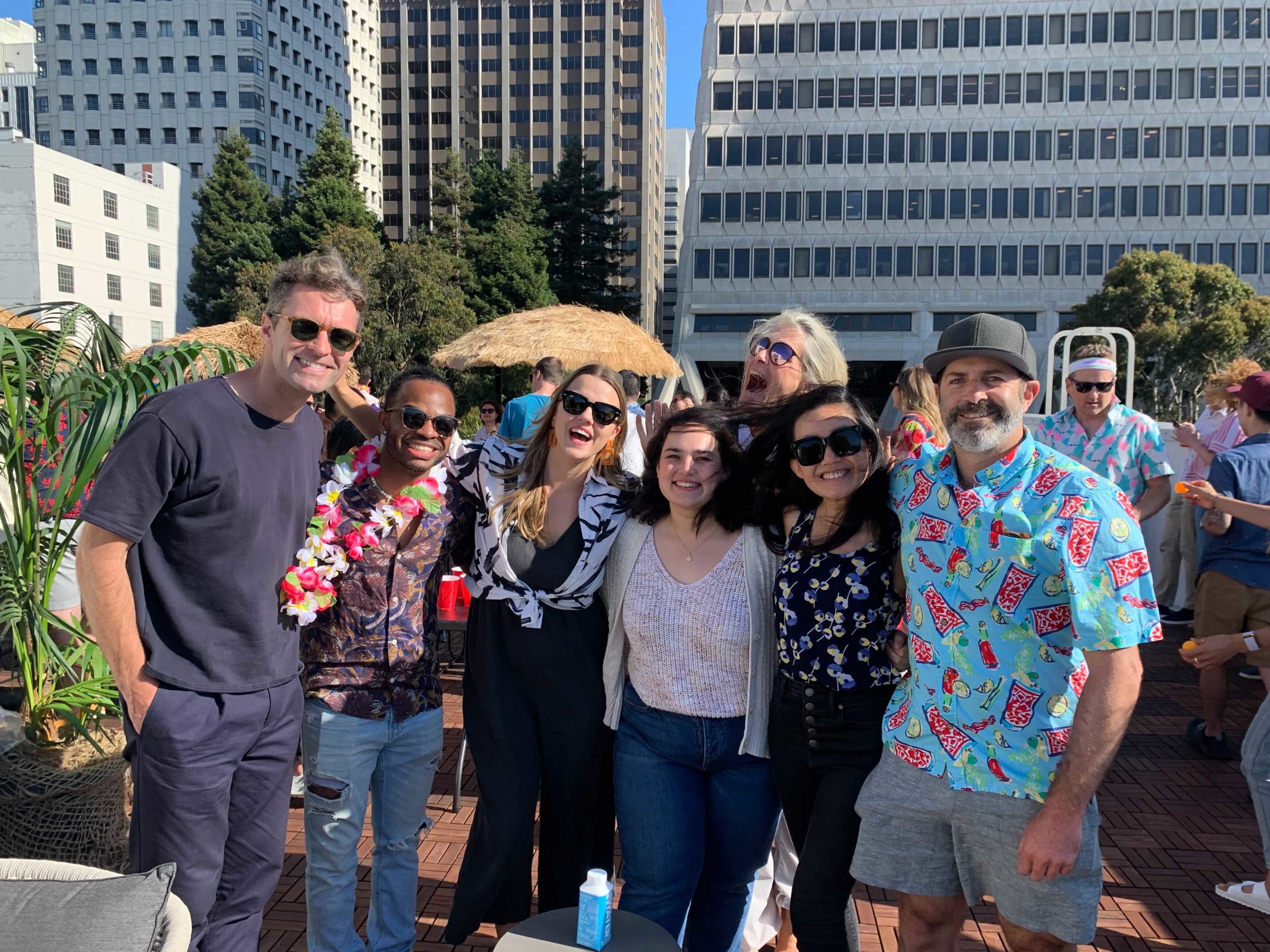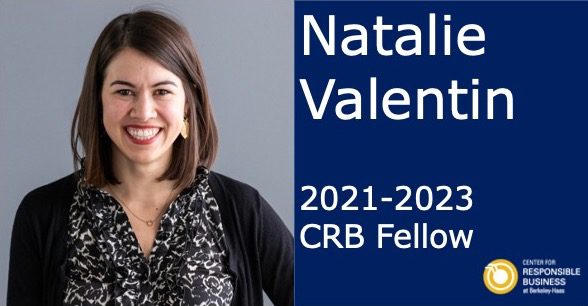The Future of Impact Management: Industry Roundtable

Written by Nancy Reyes Mullins, MDP Candidate Class of 2020 and CRB Student Advisory Board member, and Sara Olsen, SVT founder and host of The Future of Impact Management Roundtable. This is the first post of a two-part series. Check back next month for Part 2.
“Impact management” is the ongoing practice of measuring the impact of one’s activities to reduce the negative and increase the positive outcomes. Its aspirations broadly are to make transparent the impacts of economic activity and to change the way society accounts for value, so that markets and other incentives drive better outcomes for people and the planet. A driving force behind the catalyzation of this discipline has been The Impact Management Project (IMP).
By convening a facilitation process involving hundreds of investors, practitioners, and standards bodies, the IMP has achieved a major milestone for the industry, which is that it has clarified the meaning of the buzzword “impact” for enterprises and investors. The project has distilled five essential dimensions that must be understood to measure or manage impact: What, Who, How Much, Contribution and Risk.
- What tells us what outcomes the enterprise is contributing to and how important the outcomes are to stakeholders.
- Who tells us which stakeholders are experiencing the outcome and how underserved they were prior to the enterprise’s effect.
- How Much tells us how many stakeholders experienced the outcome, what degree of change they experienced, and how long they experienced the outcome for.
- Contribution tells us whether an enterprise’s and/or investor’s efforts resulted in outcomes that were likely better than what would have occurred otherwise.
- Risk tells us the likelihood that impact will be different than expected.
Entities seeking to understand their impact can use these dimensions as a check to ensure they have the necessary information.
In the face of rapidly accelerating inequality and increasingly dire threats to the planet’s life support systems, leaders working to advance the broader Impact Management profession convened May 8-9, 2019 at the Berkeley Haas School of Business. This in-depth conversation was organized around a series of pressing issues facing the field, notably how to speed its growth and response time.

The event was organized by the impact management firm (founded by a Haas Berkeley alumna) SVT Group, in collaboration with the professional association Social Value US and the Center for Responsible Business at Berkeley Haas. The Roundtable was sponsored by SVT Group, CSACO, Sopact and R. Todd Johnson. Organizations with members present included Social Value International (South Africa, Mexico, Canada, US, UK, and Hong Kong networks), the Impact Management Project, Accountability Counsel, BASF, BrightHive, Feedback Labs, ISOS Group, iPar Impact, Omidyar Networks, SASB, Sopact, Shanzhai City, Technoserve, and Third Sector Capital among others.
Participation in The Future of Impact Management Roundtable was by invitation only and followed Chatham House Rules to ensure there was an intimate number of participants who already had a substantial amount of “skin in the game” building the impact management space. To foster relationships and ensure participants found the time well-spent, the event had no speakers, panels or audience members. Instead it was organized as an all-group discussion with breakout sessions in groups of 8 to 10 participants, with moderators facilitating conversations using prompts generated by the group itself, on topics as wide-ranging as populism and impact rating services. Participants were effusive about the quality of the people and the intimacy of the experience, with one commenting, “I had the BEST time yesterday. Not only were the discussions fascinating but the forum was so open and relaxed. I really appreciated everyone’s opinions and loved meeting them all,” and “I came away from the roundtable inspired and humbled to be part of a field of such smart, thoughtful professionals moving the field forward.”
The moderators kicked off the event by asking participants to introduce themselves to the entire group and briefly summarize their area of focus, identify key partners for their success, and state why they were participating in the event. This prompt yielded a systems map that the hosts later posted publicly as a resource that the field could continue to collectively build out, to help users understand who is doing what and to orient newcomers to the space.
Figure 1. An immersive systems map developed during the Roundtable identifies the organizations and tools seen as critical to the success of the field and how they are interconnected. The map is available for public review and comment via Kumu.
Key allies identified in the impact management space ranged from financial accountants, consulting firms, technology developers, and corporations to academics, policy makers, intergovernmental economic organizations, and community representatives. The lack of uniformity in the responses was indicative of the vast diversity of arenas in which impact management is being developed.
Participants came together, as one put it, “to consolidate and combine initiatives into something that makes sense.” One participant observed that “for all the difficult problems that we have, we already have the solutions,” and impact management professionals should, therefore, focus on collaborating to advance the existing consensus. There has been tremendous progress made toward consensus on standard approaches to impact management, especially in the past decade, “by a process of essentially applied R&D,” to figure out what approaches work, what don’t, and which are feasible for businesses to employ while also sufficiently rigorous to inform a genuine understanding of impact.
[perfectpullquote align=”right” bordertop=”false” cite=”” link=”” color=”#FDB515″ class=”” size=”13″]”‘For all the difficult problems that we have, we already have the solutions,’ impact management professionals should focus on collaborating to advance existing consensus.”[/perfectpullquote]Some of the learning has yielded approaches that show the financial relevance of social and environmental effects, such as SASB and the International Integrated Reporting Initiative. Other approaches help clarify what environmental, social and governance factors are material for a given enterprise, such as GRI and B Corporation. Still others help inform an understanding of the important impacts on stakeholders of the entity’s activities such as Social Value Principles, SROI, and the 5 dimensions of impact. Taken holistically, these three types of approaches represent a set that could be adopted universally without undue cost to business, and can be tailored and supplemented to meet the specific needs of their key stakeholders.
As the discussion unfolded, the group agreed that a second area of widespread consensus that has emerged in the industry over the past decade is the need for business, investing and other sectors to recognize the communities and individuals affected by their activities, and enable these stakeholders to inform the design and assessment of programs intended to serve them. This stakeholder-centeredness was described by one person as, “trying to flip the system so that the voices of people being impacted are the ones that drive decision-making.”
Another commonly voiced interest among participants was to, “make the Sustainable Development Goals more actionable and relatable,” since the work being done by those in the room is integral to achieving the SDGs by 2030, but “it’s not always easy to identify how it’s being done.”
Related to the SDGs, but not confined to them, many participants were also concerned with the delay between the time an organization becomes aware of its impact, be it positive or negative, and their ability to respond to the issue or opportunity. Additionally, organizations found it difficult to ensure that their actions are proportionate to the scale of the issue. There are many examples of organizations, both for-profit and nonprofit, who have seemed to be applying best-in-class ESG or impact management practices, only to have it be revealed that serious social or environmental risks or violations were ongoing. PG&E and More Than Me Academy were mentioned as two examples. Current impact management systems do not seem to be adequate in addressing this challenge.
In the second day, the Roundtable participants grappled with how to make progress on these and other issues, and developed a number of promising proposals that the impact management field can plug into and help advance.
This post provides a summary of impact management and the high-level landscape analysis conducted on the first day of the event. We invite you to return to the CRB website next month for a summary of Day 2 and the conclusion of The Future of Impact Management Roundtable, as well as an invitation to become a part of this important movement.
The Roundtable was an extension of many other convenings, including but not limited to: Impact Convergence, a gathering spearheaded by the American Evaluation Association, Social Value US and Social Value International in October 2016; the SOCAP Sidecar organized by Social Value US and SVT Group in collaboration with the GIIN in October 2017 at SOCAP; the series of “huddles” facilitated by Bridges Impact+ for the Impact Management Project during 2017-2018; as well as conference calls and meetings adjacent to other gatherings that have been convened periodically by leaders committed to advancing the impact management profession.
Prepared by Nancy Reyes Mullins, MDP Candidate Class of 2020 and CRB Student Advisory Board member, and Sara Olsen, SVT founder and host of The Future of Impact Management Roundtable, with input from participating CRB Student Advisory Board members Sarah Hilmer, EWMBA Candidate Class of 2021, and Isabella Martin, MDP Class of 2019.



